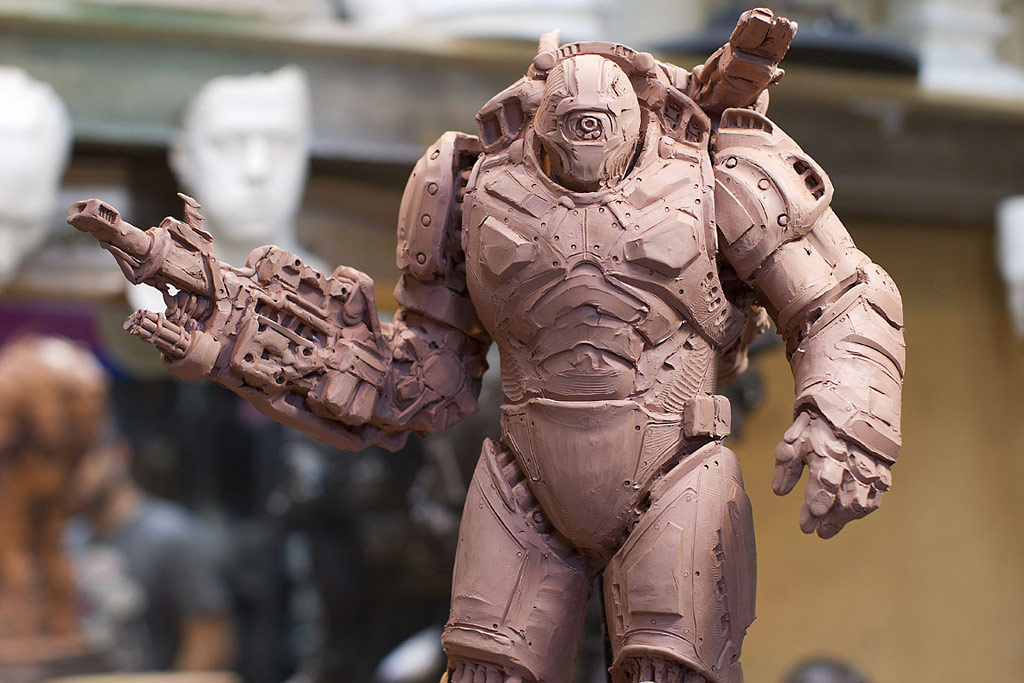BUCCACIO SCULPTURE SERVICES LLC MAKES MAQUETTES, ENLARGEMENTS & REDUCTIONS.
HOW MAQUETTES HELP VISUALIZE
Scale models help visualize a piece of art before its completion.
A maquette is a fine art term and refers to a small mock-up of a fully realized three-dimensional sculpture or architectural project. The word is French for “scale model”. Its use in English is somewhat outdated, but artists and architects may use the word to differentiate from other kinds of “models,” such as a person who poses for a portrait.
The small model may be made from paper, clay or wax or other material in order to provide a visualization of what the actual sculpture or project would look like when fabricated or built. A maquette is not only a way for the artist to realize his or her vision for the finished work but can help save money on materials and production time. Painters frequently use similar pre-work modeling, in the form of sketches; a maquette is the three-dimensional version.
Maquettes and Commissioned Sculptures
The practical uses of maquettes are most apparent when a commissioned work of sculpture is involved. If a particularly large or expensive sculpture is planned, using a maquette can help show how a piece will fit into its potential display space, and allow the person or group commissioning the work to get a three-dimensional glimpse of what they’re paying for. It also saves money on materials, rather than build something large and expensive for a client.

Maquette for robot sculpture by Jeff Buccacio
Maquettes are often used for competitions and exhibitions as well, when building a full-scale model is impractical or impossible. And it’s not just sculptors who use them as display tools; maquettes are also built by architecture students, as they try to depict their projects pre-construction.
Maquettes as Display Objects
There are several museums that have collections of maquettes, including the Museo dei Bozzetti in Italy. In Italian, maquettes are known as bozzetti, which translates to “sketch.” The museum describes its collection of maquettes, or bozzetti as the unique stories of the creative process that leads to a completed sculpture.
Some artists are known as much for their small versions as they are for their finished sculpted works. Sculptor and architect Gian Lorenzo Bernini used wax and baked terra cotta to create his small versions, which were the subject of a 2012 exhibit at the Metropolitan Museum of Art in New York, The exhibit looked at the processes behind Bernini’s famous sculptures and found that the practice works were often significantly different from the finished sculptures.
Maquettes as Separate Works of Art
Sometimes the maquette of a finished work becomes a work of art in its own right. For instance, sculptor Lynn Chadwick worked in iron and bronze, two materials that can be difficult to shape and expensive to use in large quantities. For practical purposes, Chadwick made several small versions of his pieces prior to the finished sculptures. Like other artists’ maquettes, sometimes the models show a work in progress.
For instance, when viewed together, the maquettes of Chadwick’s Inner Eye, a massive iron sculpture more than six feet tall, show the evolution of the piece over time, as Chadwick added new elements to each one. At least one of these maquettes was the in the private collection of Nelson Rockefeller.
SOURCE: by Susan Kendzulak https://www.thebalance.com
